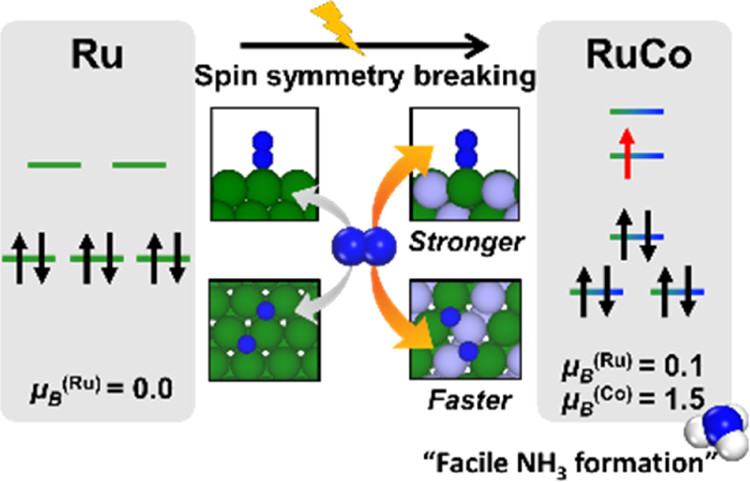Origin of Enhanced Ammonia Synthesis on Ru–Co Catalysts Unraveled by Density Functional Theory
-
Authors :
Mosab Jaser Banisalman, Min-Cheol Kim, and Sang Soo Han
-
Journal :
ACS Catalysis
-
Vol :
12
-
Page :
1090-1097
-
Year :
2022

Abstract
Bimetallic Ru–Co catalysts have been reported as promising NH3 production catalysts that are better than various Ru–X alloys, including RuFe and pure Ru, under mild conditions; however, a systematic understanding of their superior activity is still lacking. Here, we report a comprehensive theoretical study on NH3 synthesis of Ru–Co catalysts using density functional theory and microkinetic modeling. Indeed, the RuCo surface enables more facile N2 dissociation than the Ru surface, which results from the manifested Co-induced spin symmetry breaking of Ru. We also investigated the surface phase diagram of RuCo(0001) with partial pressures of H2 and N2 gases and found that the most stable phase of the RuCo surface consists of a fraction of both N and H atoms under experimental Haber–Bosch pressure conditions; however, NH3 can be readily produced on the surfaces without severe surface poisoning issues. Furthermore, this study shows that the spin-symmetry breaking of nonmagnetic surfaces can enhance the catalytic activity for NH3 synthesis, which provides an alternative strategy to catalyst design.
















